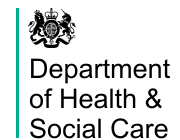Zika subunit / VLP
- Pathogen biology (Pre-clinical discovery)
- Human host immunology (Pre-clinical discovery)
- In vitro studies – functional assays (Pre-clinical discovery)
- In vivo challenge model (Pre-clinical discovery)
- Adjuvant selection (Pre-clinical development)
- Process development (Pre-clinical development)
- In vitro assay for Ab enhancement testing (Pre-clinical development)
- Human challenge model (vaccine studies) (Clinical Development)
More bottlenecks were identified when applying the Vaccine Development Process map to a novel Zika vaccine. The reasons for this were the significant number of unknowns with the pathogen biology and host immunology, specifically identifying regions of the virus that could be utilised as a possible antigen.
Secondly, the generation of reagents and the appropriate assays also proves to be a limiting factor, as these assays need to be established for further development and characterisation of the potential vaccine candidate. Without a robust set of assays, process development will be limited and slowed down. However, it may still be possible to generate some antigen in the early discovery phase, thus identification of the appropriate challenge models and the surrogate/correlate of protection will be important too. However, it should be noted that many vaccines have launched without the establishment of correlates of protection and will depend on the licensure sought and the severity of the disease and its outbreak.
Due to the novelty of the vaccine, process development, assays and formulations were identified as bottlenecks. It is possible however that time could be saved if a platform technology was used for this vaccine, in which case less time could be spent in process development.
In the case of emergency or experimental licensure, (such as a EULA), a strategy might be to establish some animal challenge data and seek to establish safety data in a Phase 1 trial before expansion into a Phase 2a/b trial. However, demonstrating efficacy can only be one in endemic or outbreak situations and will require early engagement of the national regulatory authority. Finding acceptable overseas trial sites may become limiting.


